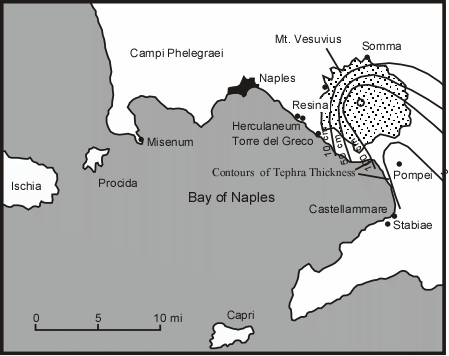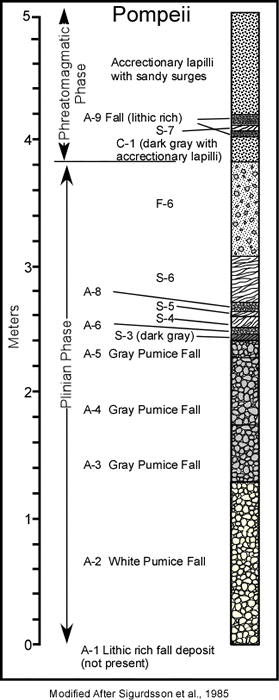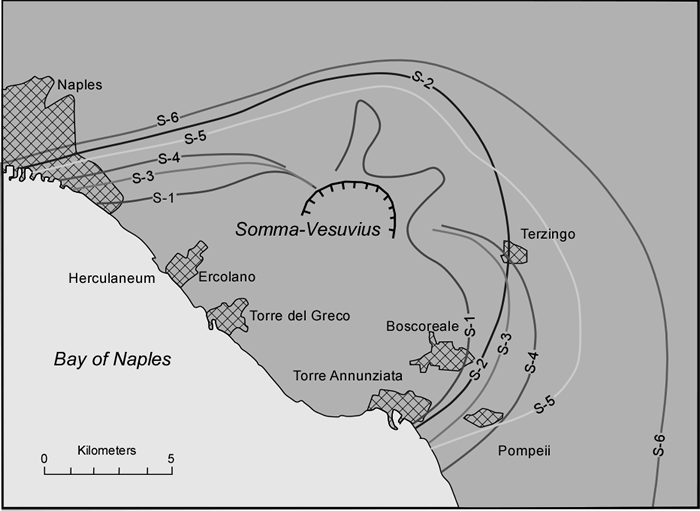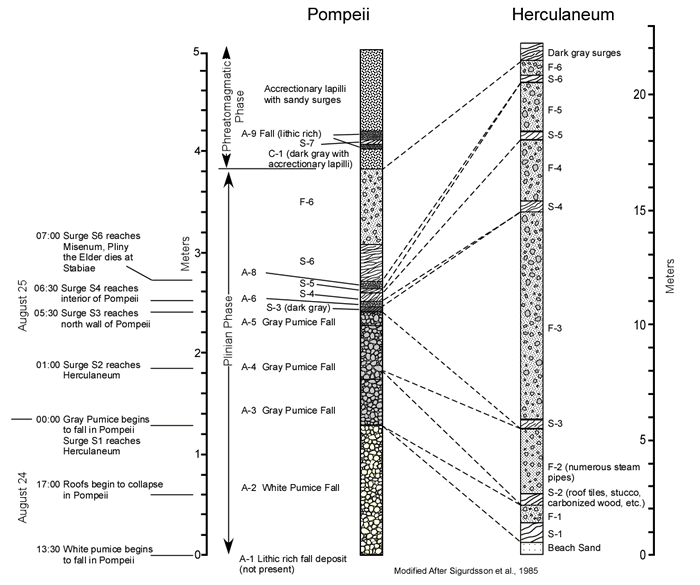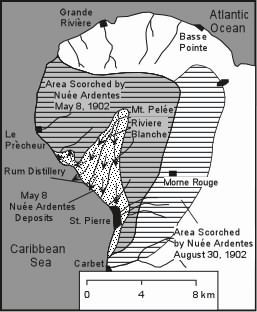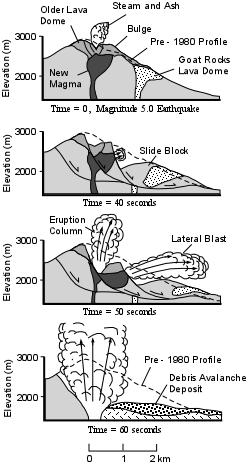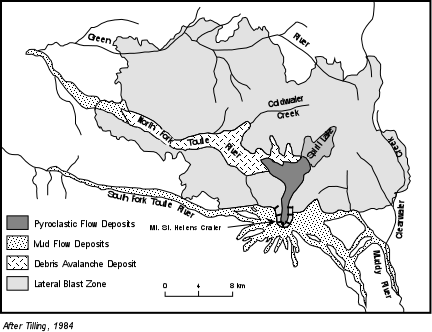We start with the account given by Pliny the Younger in his letters to Tacitus. About
1 P.M. on August 24, 79 A.D. the Plinys were in Misenum, about 30 km across the Bay of
Naples from Vesuvius. A large cloud appeared above the volcano, growing rapidly,
rising many thousands of meters and spreading out laterally in the atmosphere.
Pliny
the Younger states that the cloud had the shape of a Mediterranean pine tree, with a
narrow trunk at the base, spreading out like branches above. Pliny the Elder was
curious about the cloud and began to plan a trip across the bay to
investigate. Before he
could get his ship ready, he received word from people living closer to Vesuvius that
people needed help, and his investigative mission became instead a rescue mission.
He organized his fleet and set sail with the intention of rescuing people living near the
base of the volcano at Torre del Greco. As he crossed the bay his ship was showered
by hot ashes and pumice which accumulated on the deck. He soon found it was
impossible to make the rescue attempt and he turned in the direction of the wind and
instead landed at Stabiae, to the south of Vesuvius. At Stabiae, conditions were
still mild and he encountered his friend Pomponianus who was trying to escape to the sea,
but the winds were not favorable. In order to reassure Pomponianus that there was no
danger, Pliny went to the local baths and sat down for a meal.
As night came, Pliny
retired for several hours of sleep. During his sleep tephra began piling up in the
courtyard of the house and earthquakes and loud explosions occurred in the area of
Vesuvius. Pliny awakened by the trembling and loud noises and conferred with Pomponianus. They decided that their best escape was to go to the shore and try to
leave by ship. They tied pillows to their heads for safety from the falling pumice,
but darkness enveloped the area as a result of the falling tephra, and it remained dark
even after the sun should have come up. They eventually made it to the shore, but
found that the wind was not blowing in a direction favorable to sail away from the area.
Suddenly Pliny the Elder began to feel poorly. He laid down on a cloth near
the shore and asked for water twice. Then sulfurous fumes descended on the area
making staying put an unpleasant experience. Pliny rose to move away from the area,
but fell dead. His friends thought that he had been poisoned by the fumes, but no
one else was affected. His friends all later escaped. Three days later Pliny's
body was found, unmarked by any damage. It is highly unlikely that Pliny died of
poisoning from the fumes because Stabiae is so far from Vesuvius; it is more likely
that he died from a heart attack resulting from his physical exertion in attempting to
flee the falling ash.
On the same morning that Pliny the Elder died, his sister and
nephew were still in Misenum. Conditions there were also growing worse.
Although Misenum was upwind from the volcano, there were still frequent earthquakes and
the sky filled with ash and became dark. Pliny the Younger and his mother decided to
leave their house and move farther away from the volcano. They set off in chariots,
but the shaking of the ground and the accumulation of ash soon made it impossible to
continue. They observed sharp retreats in the sea, followed by waves that crashed
high on the shore, probably due to tsunamis as pyroclastic flows from Vesuvius entered the
sea. They attempted to move farther inland, but soon the ash from the eruption
became so thick that they were engulfed in total darkness. Pliny the Younger
compared the darkness to that of a sealed room with no source of light. This lasted
for many hours, but eventually the air cleared and they survived.
|
